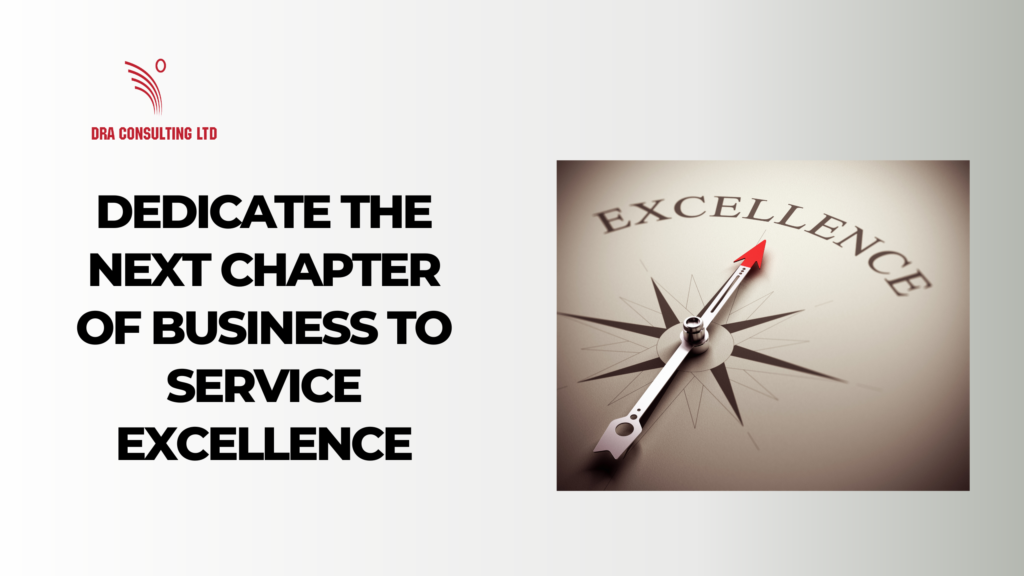When it comes to service level ranking in some business sectors, a common state of affairs is that a majority of players are equally ranked at satisfactory (not exceptional) level. This creates the existence of a herd syndrome that causes a level of psychological comfort within the sector, since no one player is ahead of the pack. Each business becomes comfortable with the existing bar of collective mediocrity.
When one of the players decides to break free and answer the call to service upliftment, all of a sudden, the other players wake up and begin to react to the shift in the collective equilibrium.
This article is for all of those business leaders who have been meaning to get started on breaking free from being average in their business sector and who are ready to rewrite their history of service to customers. These are some of the foundational practices that support the achievement of a thriving customer experience management model.
So, let’s get started.
If inaccuracy is a norm, it should be eliminated, if tardiness is a way of life, it should be replaced with a sense of urgency.
Of course, the no brainer that would be number one, is for the business to reject mediocrity. There is no room for mediocrity when interacting with the next generation of customers, whose appetite for sloppiness is fast approaching zero. If inaccuracy is a norm, it should be eliminated, if tardiness is a way of life, it should be replaced with a sense of urgency.
If the business is suffering from low vibrational energy, it’s time to stimulate employee excitement and recharge the culture. Employees who are eager to serve bring the right attitude to the customer engagement process, whilst a green culture creates the space for enabling the right conversations that generate cultural harmony, to occur.
Convert the business into a high-tech, digitally-enabled entity.
Underperformers weigh a business down. If there are employees who are chronic underperformers and everything has been done to support their success, yet the performance needle has not moved upward, then it’s time to begin planning the exit strategy. Please remember that this applies to senior as well as junior officers.
Nurture managerial competence, so that the business is helmed by individuals who don’t spend their days fire-fighting, but rather possess the ability to mobilize the workforce to achieve business objectives on a daily basis. I believe that that there is a need for clarity on what constitutes “effective management,” followed by a renewal of managerial practices that bring best-fit solutions to the evolving issues of the day.
Look inside the business for great ideas. Far too often, business leaders believe that the oracle of great ideas exists outside of the business, whilst the employee community offers the greatest pool of potentially innovative insights and ideas.
Now, because of the transformational work that I do, I come across many managerial shortcomings, caused by the failure to ensure that managers are retooled every two years or so, to keep up with the changing demands of a multi-generational workforce. The workforce is evolving faster than the growth in managerial competence, hence the recurrent deficit in skill areas that include people engagement and horizontal collaboration.
Nurture leadership effectiveness. There is a lack of clarity about what constitutes effective leadership, (despite a multitude of leadership development courses). If leaders lack the skill to energize businesses to flourish in the game of ever-evolving landscapes, because they lack change management and transformational expertise, how can they be expected to master the high-level skill of translating innovation and vision into executable action?
Make excellence “the” overarching pillar that governs every aspect of the existence of the business.
Convert the business into a high-tech, digitally-enabled entity. All of the digital tools don’t have to be onboarded at the same time, but the strategic use of technology must be a core developmental pillar for the business. Technology-powered businesses that respect the value of data and customer analytics, are favoured to take decisions that are more market intelligent than their counterparts.
Look inside the business for great ideas. Far too often, business leaders believe that the oracle of great ideas exists outside of the business, whilst the employee community offers the greatest pool of potentially innovative insights and ideas. Why not start a program that stimulates and recognizes the emergence of bright ideas? I worked at an international company where employees were challenged to come up with bright ideas that saved money, earned money or improved processes and were rewarded for those ideas that were green lighted.
Finally, I’ve left my favourite for last. Make excellence “the” overarching pillar that governs every aspect of the existence of the business.
I challenge you to imagine just how high a business can begin to soar, if every employee and every aspect of business operation were to be anchored to excellence.

